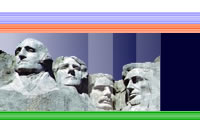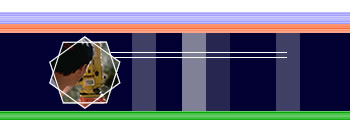This is only one example. There are many other conditions where
this adjustment might be used. The next question is; How is the
nonriparian broken boundary adjustment computed? There's more than
one approach to computing this adjustment, but for the sake of simplicity,
only one will be presented in this program. Here's an example of
the nonriparian broken boundary adjustment without the numerical
bearings and distances.
At the end of record courses, we have a tie to the objective found
corner. In this example, where the actual record courses were run,
the tie from the end of the record courses to the objective corner
is the closing error.
Next, the amount of closing error in latitude and departure is
distributed among the record courses according to their lengths.
The true line bearings and distances are then obtained by connecting
the true positions of the corners. Now, let's do a problem.


